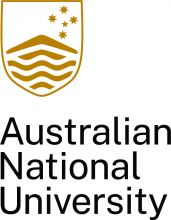Federal funding reforms and Covid’s economic impacts made little difference to Australians’ appetite for university study this year, newly released figures suggest.
A report on domestic applications for undergraduate study shows that the trends defied expectations, with interest from school-leavers declining by almost 6 per cent – even though their numbers had grown, and the pandemic had eroded opportunities for work or travel.
Meanwhile, the “society and culture” fields attracted most offers of university places – despite the federal government’s efforts to discourage interest in such courses by jacking up tuition costs through the Jobs-ready Graduates (JRG) reforms to fees and subsidies.
Australian National University policy expert Andrew Norton said neither JRG nor macroeconomic Covid factors appeared to have greatly influenced the pattern of applications. “The effects of Covid were mainly via making health-related courses more attractive,” he blogged.
Health proved the most popular broad field of education, with applications rising by almost 13 per cent to over 84,000 – almost 14,000 more than for society and culture, in which applications increased by just 1 per cent.
Nevertheless, society and culture attracted almost 4,000 more offers of university places, suggesting that neither students nor universities had behaved as the government intended. Society and culture was one of the few broad fields to see an increase in the “offer rate” – the proportion of applications that attracted offers of university places.
Universities may have been incentivised to make more places available in humanities and social science disciplines because the JRG fee increases more than compensated for the cuts in course subsidies, making such fields economically attractive from an institutional perspective.
Society and culture also bucked a trend of increased applications in areas where fees had fallen, and fewer applications in disciplines where fees had risen. Professor Norton said fees were “largely redundant” in shaping student choices because applications for vocationally oriented courses tended to move in line with the labour market.
While nursing courses had experienced a pronounced spike in applications, Professor Norton said, nursing had been “very much in the news” during 2020. “Strong demand for health staff would have been a major influence on demand, with or without lower student contributions.”
He said university applications trends among people leaving school were “hard to interpret”, while interest from older people – who had also been tipped to turn to university as job opportunities dried up – was only “moderately consistent” with expectations.
Applications increased from people aged between their mid-twenties and late thirties, but declined among mature students aged under 25 and over 39.
Overall, applications rose by about 2 per cent and offers by half that figure. The offer rate is at its lowest since 2012, when caps on domestic undergraduate places were removed, suggesting that university places are now harder to obtain than at any other time in the past decade.
Register to continue
Why register?
- Registration is free and only takes a moment
- Once registered, you can read 3 articles a month
- Sign up for our newsletter
Subscribe
Or subscribe for unlimited access to:
- Unlimited access to news, views, insights & reviews
- Digital editions
- Digital access to THE’s university and college rankings analysis
Already registered or a current subscriber? Login










